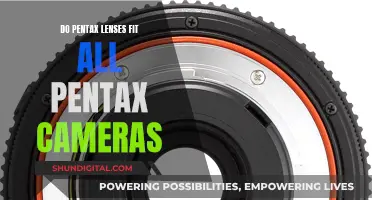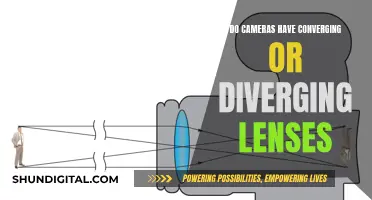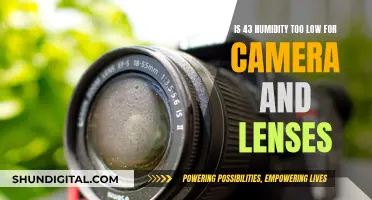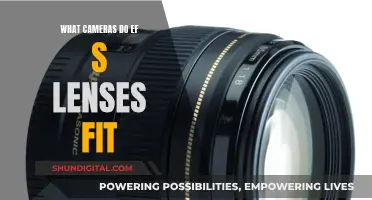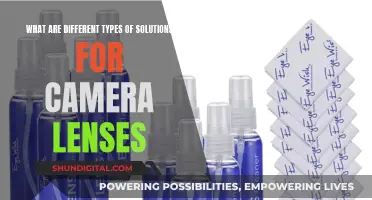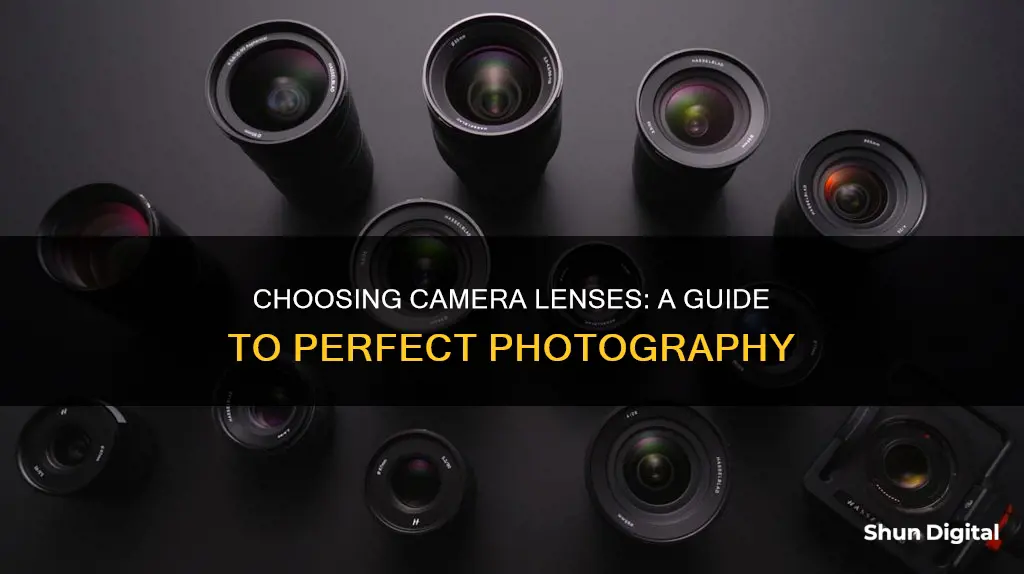
Choosing the right camera lens is crucial to achieving the perfect shot. With so many options available, it can be overwhelming to find the right one for you. Here are some key factors to consider when selecting a camera lens:
- Focal Length: The focal length determines the angle of view and how zoomed-in or out the image will be. Lower numbers indicate a wider shot, while higher numbers provide a longer zoom. Wide-angle lenses (e.g. 14mm, 20mm, 24mm) are ideal for fitting more in the frame, while telephoto lenses (50mm-100mm) are suitable for getting closer to the subject.
- Aperture: Aperture refers to how much light can enter the lens and is represented by the letter f followed by a number (e.g. f/1.4, f/1.8). Lenses with larger apertures (lower f-stop numbers) allow more light in, making them suitable for low-light conditions and creating a shallow depth of field.
- Prime vs. Zoom Lenses: Prime lenses have a fixed focal length and tend to deliver high-quality images with wider apertures. Zoom lenses, on the other hand, offer a range of focal lengths, providing versatility but often sacrificing image quality.
- Lens Compatibility: Ensure that the lens is physically compatible with your camera. Check the lens mount and sensor size (e.g. full-frame, APS-C, Micro Four Thirds) to ensure it will fit your camera and work properly.
- Image Stabilization: This feature helps reduce blur in images, especially when shooting handheld or in low-light conditions. Look for image stabilization features such as Canon's Image Stabilization (IS) or Nikon's Vibration Reduction (VR).
- Budget: Lenses can vary significantly in price, with more expensive lenses typically offering better image quality, faster apertures, and additional features like image stabilization. Consider your budget when choosing a lens, as it will narrow down your options.
| Characteristics | Values |
|---|---|
| Focal Length | The distance (in mm) from the centre of the lens to the sensor when the subject is in focus. The lower the number, the wider the shot. The higher the number, the longer the zoom. |
| Aperture | The measure of how much light can enter the camera, represented by the letter f and corresponding numbers, collectively known as an f-stop. A small aperture number allows more light to enter the lens. |
| Prime Lens vs Zoom Lens | Prime lenses have a fixed focal length and are smaller and lighter than zoom lenses. Zoom lenses cover a variety of focal lengths and are bulkier. |
| Compatibility with Camera Sensor | Sensors in most DSLR and mirrorless cameras are bigger than sensors in point-and-shoot cameras, resulting in clearer and more realistic images. The two types of sensors are CCD and CMOS, the latter being larger and capable of capturing more light. |
| Budget | Lenses vary in price depending on features such as image stabilisation, glass quality, and lens coatings. |
What You'll Learn
- Focal length: the distance from the centre of the lens to the sensor when the subject is in focus
- Aperture: the amount of light that can enter the lens
- Prime vs. zoom lenses: primes are fixed focal length, zooms are more versatile
- Lens compatibility: lenses must be compatible with your camera's sensor and mount
- Lens types: standard, wide-angle, telephoto, macro, fisheye, etc

Focal length: the distance from the centre of the lens to the sensor when the subject is in focus
Focal length is the distance from the centre of the lens to the sensor when the subject is in focus, and it is measured in millimetres. The lower the number, the wider the shot, and the higher the number, the longer the zoom. For example, if you want to fit more into your frame, you might want to look into wide-angle focal lengths such as 14mm, 20mm, 24mm, 28mm, and 35mm. On the other hand, if you want to get as close as possible to your subject, a telephoto lens with a focal length of 50mm to 100mm would be a better choice.
The focal length you choose will depend on the type of subject matter you are interested in photographing. For instance, landscape photography usually involves wider-angle lenses with 14mm to 35mm focal lengths, while architecture photography also works better with wide-angle lenses. Portrait photography, on the other hand, calls for lenses that are between 45mm and 85mm. At these focal lengths, the proportions of the face and body are true to life and flattering.
For wildlife and nature photography, longer focal lengths in the 300mm to 600mm range are typically required. With these focal lengths, you can capture tight shots of birds and wildlife without disturbing them. It is also important to note that the focal length of a lens is affected by the size of the camera's sensor. For example, a 50mm lens on a cropped-sensor camera will act more like a 75mm or 80mm lens, depending on the brand.
In addition to focal length, other factors to consider when choosing a camera lens include the aperture, image stabilisation, autofocus capability, and manual focus override. The aperture, or f-stop, determines how much light the lens lets through to the sensor and how much of the scene is in focus. Lenses with wider apertures are better suited for low-light conditions and can create a shallow depth of field, resulting in beautifully blurred backgrounds. Image stabilisation is another useful feature, especially for handheld shots or when using a telephoto lens, as it helps to reduce blur caused by camera shake.
Autofocus is a common feature on modern lenses, and some lenses also offer a manual focus override for more precise control. Additionally, the build quality and weather sealing of a lens can be important considerations, especially for outdoor photography. Lenses with weather sealing can provide protection against harsh conditions such as high humidity, rain, dust, and extreme temperatures.
Lending Camera Lenses: A Unique Library Offering
You may want to see also

Aperture: the amount of light that can enter the lens
Aperture is the opening in a lens that lets light into the camera. It is measured by the f-stop, which is the ratio of the focal length to the effective aperture diameter (the diameter of the entrance pupil). A lower f-number denotes a greater aperture, which allows more light to reach the film or image sensor. For example, an f-stop of f/4 means the aperture is open a quarter of the way.
The aperture is controlled by the iris, which is a series of blades that block out any undesirable light. The iris works like the human eye, expanding or shrinking to control the size of the pupil and, therefore, the amount of light that enters the eye. The same is true of a camera lens, where the aperture can be widened or narrowed depending on the desired amount of light.
The size of the aperture also controls the depth of field, which refers to how much of the image is in focus. A wider aperture will result in a shallow depth of field, where part of the image is blurry, whereas a smaller aperture will result in a wide depth of field, where most or all of the image is sharp.
The aperture is one of the three pillars of photography, alongside shutter speed and ISO. It is arguably the most important of the three because it has such a significant impact on the final image.
Exploring the Diverse World of Camera Lenses
You may want to see also

Prime vs. zoom lenses: primes are fixed focal length, zooms are more versatile
When choosing a camera lens, it's important to consider the type of photography you plan to do and the specific features you require. One key decision is whether to opt for a prime or zoom lens.
Prime lenses have a fixed focal length, meaning the angle of view cannot be changed without physically moving closer or farther from the subject. In contrast, zoom lenses offer a variable focal length, allowing you to adjust the angle of view by turning the zoom ring. This added versatility makes zoom lenses a popular choice for photographers who need to adapt to different situations, such as landscape and wildlife photography.
Prime lenses, on the other hand, often provide superior image quality, especially in low-light conditions, thanks to their wider apertures. They are also generally smaller, lighter, and more affordable than zoom lenses. The restricted focal length of prime lenses can encourage photographers to be more creative and thoughtful in their compositions, as they must "zoom with their feet" by physically moving to adjust their shots.
While zoom lenses offer the convenience of multiple focal lengths in a single lens, prime lenses typically deliver sharper images and more impressive bokeh effects. Additionally, the complex optics and larger aperture range of zoom lenses often result in increased size and weight compared to prime lenses. They can also be more expensive.
Ultimately, the decision between a prime and zoom lens depends on your specific needs and preferences. If you prioritise versatility and convenience, a zoom lens might be your best option. However, if image quality, low-light performance, and bokeh are more important to you, a prime lens could be the better choice.
Lenses and Cameras: Powering Photography Together
You may want to see also

Lens compatibility: lenses must be compatible with your camera's sensor and mount
When choosing a camera lens, it is important to ensure that the lens is compatible with your camera's sensor and mount. Incompatible lenses can damage your camera.
There are two types of sensors available: the CCD (Charged-Couple Device) and the CMOS (Complementary Metal Oxide Semiconductor). The latter is larger than the former and can capture more light, which allows it to produce higher-quality images than the CCD. But this difference in size can also affect the structure and overall function of your camera, so make sure the lens you get is compatible with your camera's specs and body.
DSLR cameras and mirrorless cameras are available in two formats: crop sensor and full frame. When you use a full-frame camera, the focal length listed on your lens functions normally and will be accurate in the photographs you take. However, crop-sensor DSLR cameras have a magnification factor that depends on the brand you use. Crop sensor mirrorless cameras, also called micro four-thirds cameras, can have a multiplication factor of up to 2x. This factor will impact the effective focal length of the lens you use.
Each camera manufacturer uses its own proprietary lens mount, meaning lenses cannot be swapped across brands. The two exceptions are Micro Four Thirds, which was developed jointly by Panasonic and Olympus, and L-mount, a full-frame collaboration between Leica, Panasonic, and Sigma.
Most companies are now focusing their efforts on mirrorless camera mounts, so this is where the newest and most advanced lenses are emerging. Many DSLR-mount lenses can be adapted to work on mirrorless cameras made by the same brand, but lenses for mirrorless cameras cannot be used on DSLRs.
When choosing a lens, it is important to consider the sensor size and format of your camera, as well as the lens mount. This information will help ensure that your lens is compatible with your camera and will function as expected.
The Future of Photography: Cameras in Contact Lenses
You may want to see also

Lens types: standard, wide-angle, telephoto, macro, fisheye, etc
Camera lenses are divided into two broad categories: prime and zoom. Prime lenses have a fixed focal length, delivering high-quality images with wider apertures, while zoom lenses offer variable focal lengths for convenience and adaptability.
Standard Lenses
Standard lenses offer a perspective and angle of view closer to that of the human eye. They typically range from 35mm to about 85mm and are a popular, versatile choice for photographers.
Wide-Angle Lenses
Wide-angle lenses offer a broader field of view with less distortion than ultra-wide-angle lenses. They are ideal for landscape and group portrait photography, with typical focal lengths ranging from 24mm to 35mm.
Telephoto Lenses
Telephoto lenses provide a range of focal lengths, often starting from 100mm and going up to 800mm or more. They are commonly used in sports, wildlife, and portrait photography, offering a more compressed and natural look to images.
Macro Lenses
Macro lenses are designed for close-up photography, allowing photographers to capture small subjects or details with a shallow depth of field. They can be either prime or zoom lenses and typically have focal lengths ranging from ultra-wide-angle to telephoto.
Fisheye Lenses
Fisheye lenses are a type of ultra-wide-angle lens that creates a distinctive curved effect. They have very short focal lengths, often as low as 8mm, and are used for specialised applications such as indoor photography or design work.
CCD Camera Lenses: Color Corrected or Not?
You may want to see also
Frequently asked questions
Prime lenses have a fixed focal length and are known for delivering high-quality images with wider apertures. They are smaller, lighter, and often cheaper than zoom lenses. Zoom lenses, on the other hand, offer a range of focal lengths and are more versatile, but may sacrifice image quality and are generally more expensive.
Focal length determines how wide or zoomed-in your image will be. A shorter focal length gives a wider image, while a longer focal length allows you to zoom in and crop your image. For context, wide-angle lenses typically range from 14mm to 35mm, while telephoto lenses start at 50mm and go up to 100mm or more.
Aperture controls how much light enters the lens and, in turn, how much of your image is in focus. A lower f-stop/higher aperture setting will blur the background, creating a stylish, professional portrait effect. For more light and faster exposures, choose a wider aperture (lower f-stop number).
For beginners, it's recommended to start with a standard lens, typically in the range of 35mm to 70mm. This will give you the most natural-looking images, similar to what the human eye sees, and is a versatile option for everyday use and portraits.



